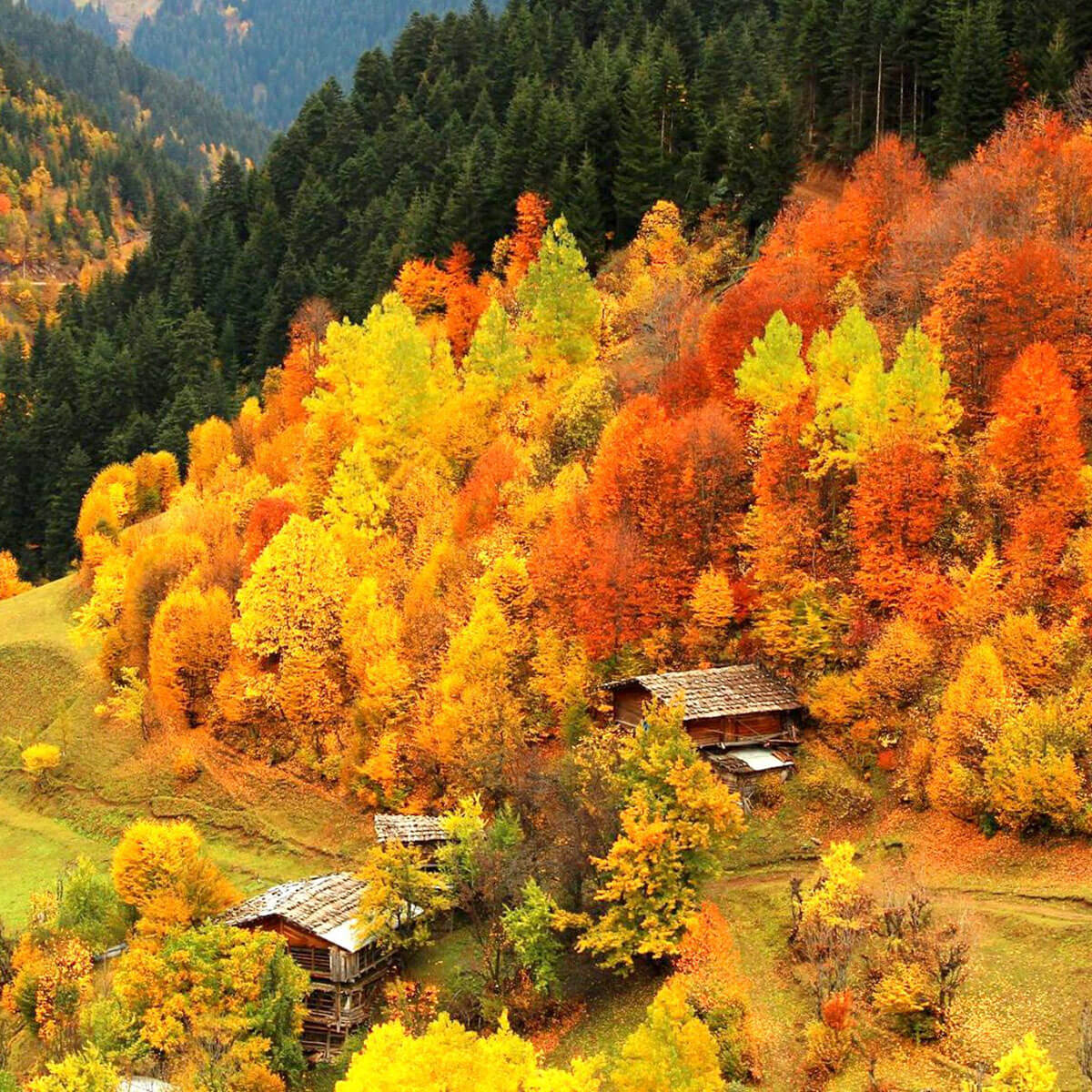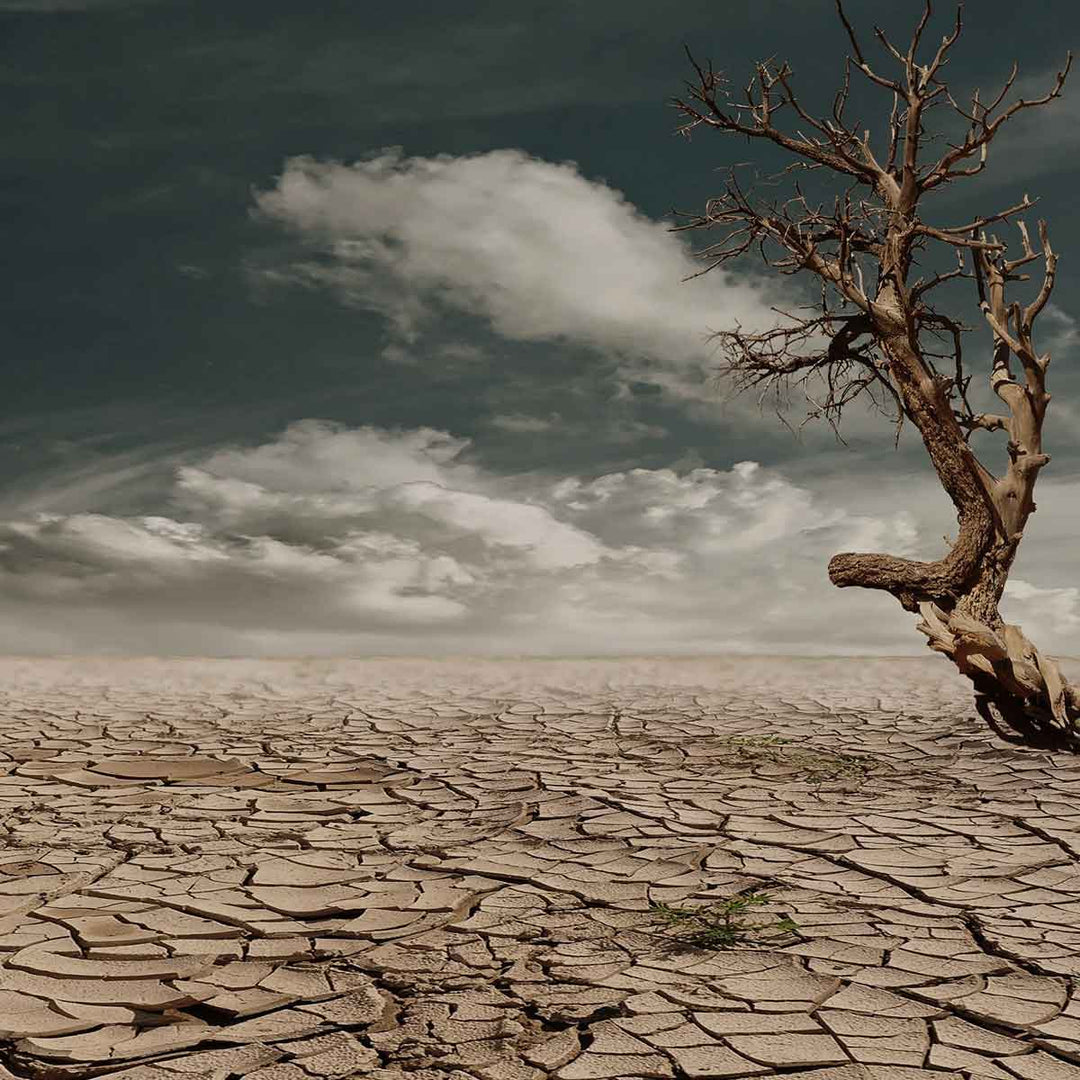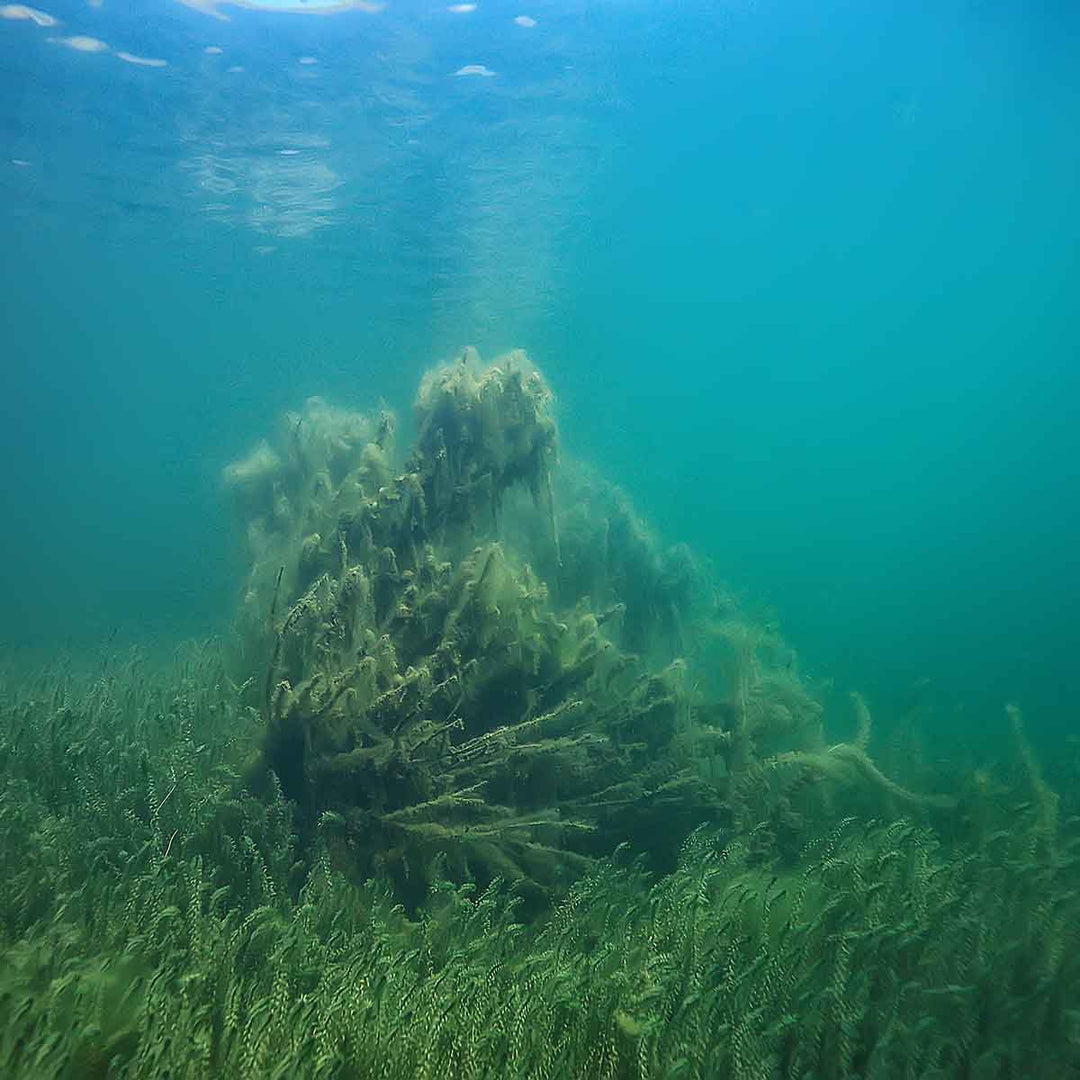Urbanization can be considered one of the turning points in human history. This life form, which was adopted with benefits in mind, has also produced harmful consequences over time. The rapid increase in population and increase in density in certain regions seem to leave some cities in the background. However, this creates an opportunity for sustainable living in locations that are thought to be left behind. Some people and institutions took action against this situation and started the Slow City Movement, thinking that uniform urbanization is not efficient in terms of sustainability. Cittaslow, in which many cities from Turkey also participate, continues to spread rapidly around the world. When this is the case, questions such as what does slow city mean and which cities are in this group gain great importance.
Slow City: Also known as Cittaslow, what is it?
The Slow City Movement emerged in Italy under the name Cittaslow. This institution, which can also be described as a kind of "union of municipalities", has been in existence since 1999. Cittaslow, which spread in a short time because it is a remarkable project, has reached international status. The name of the organization is a combination of the Italian words "city (citta)" and the English "slow". The concept of "slow" here does not refer to the slowness of life in the relevant city, but to its calm flow. The concepts of "slow city" and "slow city" are also frequently used in Turkish.
The aim of the Slow City Movement is quite remarkable. This movement proposes “not to develop”, in global jargon. The organization aims to prevent natural cities from developing and becoming similar to each other under the name of global development. In line with this idea, the administrators of the cities during the administration period; It is expected to protect its local architecture, local food, crafts, tradesmen, traditions and customs. It is aimed that cities do not lose their identities, both visually and culturally.

What are the Criteria for a City to Become a Slow City?
Slow city criteria are determined by the Cittaslow association. The headquarters of this union, to which municipalities can become members as a result of their own wishes and applications, is located in Orvieto, Italy. For the management of the union, among the members; The president, vice president and general secretary are elected. The National Networks system was established so that members can have a say in management. A National Network can be established by having 3 different cities from a country become slow cities. States that have been able to establish a National Network gain the right to be represented in the International Coordination Committee, which is considered the governing body of Cittaslow. Determination of criteria and evaluation of applications are also carried out in line with this management system.
Cities that want to participate in Cittaslow as a slow city must prepare an application file. The file in question must contain documents of the projects carried out by the applicant city within the framework of the following 7 main headings. The diversity of projects is effective in approving the application. The applicant city is evaluated and scored in line with its activities within these criteria. In some cases, the evaluation can be made not only on the file but also directly in the relevant city. In order for a city to become a slow city, it must receive a passing grade in this evaluation. The 7 main headings mentioned and some of their related criteria are as follows.
Environmental Policies:
Air and water cleaning
Separating and collecting solid waste
Drinking water consumption rate
Use of resources such as solar energy
Reducing visual and light pollution
biodiversity
Infrastructure Policies:
Bicycle paths, their length and bicycle parking areas
Alternative and environmentally friendly transportation planning
Architecture for disabled people
Access to health services
Urban Quality of Life Policies:
Improving city values
Green areas consisting of productive plants and fruit trees
Benefiting from interactive services and information communication technologies
sustainable architecture
Amount of concrete used in green areas
Policies Concerning Agricultural, Touristic, Tradesmen and Craftsmen:
Protection of handmade, labeled or branded artisan products
Increasing the value of rural areas by facilitating access to services
Protection of local events
Development of agroecology
Plans for Hospitality, Awareness and Education:
Increasing the awareness of tradesmen and operators
slow routes
Educators and managers receive training on Cittaslow
Health training
Supporting Cittaslow campaigns
Social Cohesion:
Work against discrimination
Integration of disabled individuals
Employment in younger age groups
poverty situation
Partnerships:
Supporting slowfood activities
Supplementing traditional foods with Slowfood
Collaboration to spread Cittaslow and Slowfood philosophies
In the light of this information, "What is a slow city?" to the question; The answer can be given as a province whose population is below 50,000, which acts in accordance with the Cittaslow philosophy and meets the above criteria.
What are the advantages of being a slow city?
Participating in the Slow City Movement has some advantages for cities. The system is bound by certain rules within itself. Cities that keep the Cittaslow philosophy alive can achieve some gains in line with this process. For example, sustainable tourism is just one of them. Regions that meet the definition of slow city attract tourists with their cultural texture. Cities that move away from the philosophy of this system may lose their cultural texture and thus their touristic character.
The issues supported by the Cittaslow philosophy also create significant advantages for cities. The topics supported within the scope of the Union can be listed as follows:
Inspiring healthier lifestyles
Defending cultural diversity and uniqueness of cities
Protect the environment
Reacting against the sameness caused by globalization in settlements
Improving the city's quality of life
Making shared living better for city dwellers and tourists
When these simple ideas advocated by the slow city system are put into practice, the quality of life in the relevant region increases significantly. The quality life of the local population ensures that visiting tourists also enjoy it. Preserving the natural and original texture also contributes to the dynamism of tourism. The city can develop in every sense while preserving its uniqueness.
Which are the Slow Cities in Turkey?
Slow city is a movement that has been widely adopted in Turkey. So much so that Turkey can be listed among the countries with the most cities included in the union. The fact that the criteria in the slow city system naturally exist in many parts of our country also provides an advantage in this regard. In short, the Cittaslow philosophy is very suitable for the structure of Turkey's charming districts. This enables our districts to easily become members of the union.
Many districts from Turkey have been accepted to Cittaslow; So which is the last slow city? It can be said that the last slow city is Kemaliye (Erzincan), which was accepted in March 2022. But it is a known fact that this will not be the last time.
Seferihisar / Izmir
Izmir Seferihisar is registered as Turkey's first slow city. The district, which is 45 kilometers away from the city center, has been a frequent destination for travelers throughout history. Evliya Çelebi referred to this region as "rich in produce" in the 17th century. Richard Chandler, who came to the region in the 18th century, stated that he was surprised that the city, which is rich in grapes, did not produce wine.
Seferihisar is at an important point not only in grape production, but also in Satsuma tangerine and olive production. Known to have a very old history, Seferihisar hosted Teos, one of the 12 Ionian states, within its borders. A large temple built in the name of Dionysus is also located in this region.

Perşembe / Ordu
Perşembe, known as Vona in the 8th century BC, is one of the prominent districts of Ordu. Founded at the foot of a hill called Kordontepe, the district is 13 kilometers away from the city center. The fact that it has preserved its cultural structure despite being so close to the city center is an important factor in Perşembe being considered a slow city. Yason and Çam Burnu, about which there are many legends, constitute the basic identity of Perşembe.
Yalvaç / Isparta
Another district of Turkey that has received the title of slow city is Yalvaç, located in Isparta. It is a region that conveys information from Neolithic times to the present day. Animal fossils thought to date back eight million years have been found in the district, which joins Cittaslow with its historical texture. The geographical location of the region is also quite unique. Yalvac; It is a settlement established on the shores of Lake Hoyran and at the foot of the Sultan Mountains.
Taraklı / Sakarya
Taraklı, which looks like a distant village, is the Cittaslow district of Sakarya. The settlement, built in a narrow valley, is surrounded by mountains and forests. The distance of the city to the city center is 65 kilometers. One of the favorite spots of Taraklı is Hisar Hill. There are two water cisterns on the hill, thought to date back to 2000-1000 BC. Taraklı is considered one of the first settlements of the Ottoman Empire. In the city; Houses, fountains and bazaars clearly reflect the Ottoman atmosphere.

Gökçeada / Çanakkale
Gökçeada, one of the largest islands of Turkey, is a truly slow city with its unique nature and geographical location that fascinates visitors. Gökçeada, a district of Çanakkale, attracts attention with its biological diversity. The island, where rich water resources are abundant, is also known as Imroz. The island, which is the subject of legends with its biodiversity, clean sea and nature, received the title of slow city in 2011. Turkey's first and only calm island; It preserves its natural texture with production methods such as olive growing, beekeeping, fishing, viticulture and organic agriculture.
Vize / Kırklareli
Located between Istanbul and Edirne, Vize gained the title of slow city in July 2012. This charming district, a mosaic of history, culture and nature, has an extensive history dating back to the Thracians. Vize, which has an extremely rich historical and natural heritage, is frequently mentioned in the works of the world-famous writer Georgios Vizyenos. In fact, Vizyenos says, “There are many towns in Thrace. But there is nothing as beautiful as Visa.” He talks about it with these words. Hell Waterfalls, Çiftekaynaklar, Kıyıköy and Yenesu Cave are just a few of Vize's destinations that amaze with their natural beauty.

Akyaka / Muğla
Akyaka, one of the hidden natural beaches in Turkey, received the title of calm city in June 2011. History BC Dating back to the 3rd century, the town offers the opportunity to take a peaceful journey into history with its bay-windowed houses and stone streets. It has intense biodiversity as it is the region where two rivers flow into the sea. Even; It is also the common habitat of Mediterranean monk seals, flamingos and storks.
The town, which preserves the unique architectural structure and natural beauties of the Aegean, is one of the first regions that come to mind when sustainable tourism is mentioned. As you go on a peaceful trip to Akyaka, you can add Green Petition towels, recycled from plastic bottles and waste fabrics, to your suitcase. You can encourage everyone to protect the natural heritage of the region by raising awareness with your 100 percent recycled beach towel.
Yenipazar / Aydın
Located right in the middle of the Büyük Menderes Basin, Yenipazar is a charming district 41 km away from Aydın city centre. The history of the district at the foot of the forest-covered Madran Baba Mountain dates back to BC. It dates back to the 2000s. Yenipazar, which has hosted many civilizations throughout history, is among the favorite towns of Aydın in terms of culture and nature. It has managed to become a quiet city by preserving its original texture until today.

Halfeti / Şanlıurfa
Located on the banks of the Euphrates River, Halfeti, Şanlıurfa has legends in the past; Today, it is one of the districts that are the subject of movies. A part of the district, which has a mystical atmosphere with its two-storey cut stone houses with gardens, has been submerged under the waters of Birecik Dam Lake. Savaşan is one of the submerged villages that is remembered with its mosque, only the minaret of which is visible.
The district, which has been known as a hidden paradise since 2000 after the dam lake overflowed, managed to enter the quiet cities network in 2013. Halfeti, known as the only place where black roses grow, is a frequent destination for local and foreign tourists with its historical heritage. Norhut Church, Kanterma Hamlet Inn, Kanneci Mansion and Greek Castle are among the historical heritage of the district.

Şavşat, which received the title of slow city in June 2015, is remembered with its admirable nature. The district is located 71 km away from Artvin city center; It is surrounded by huge mountain ranges, sharp slopes, and narrow and deep valleys. The history of this natural wonder, which resembles a movie scene, dates back to BC. It dates back to the 2000s. Livelihood sources in the region, which hosts countless nations; beekeeping, animal husbandry, forestry and agriculture. Thanks to irregular landforms and altitude, there are a wide variety of vegetation zones in the region. With its biodiversity and traditional architecture, including many endemic species, Şavşat is a truly tranquil city where the only sounds belong to the birds.













